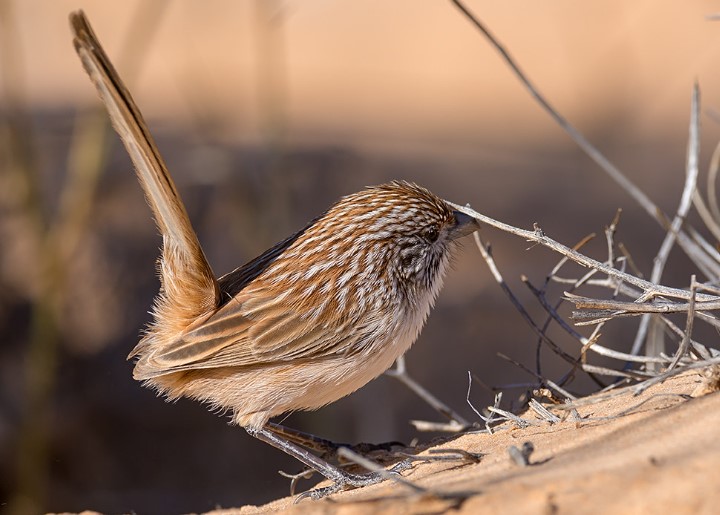Introduction: The tiny, purple-throated woodstar (Calliphlox mitchellii) is a species of hummingbird that flies like bumblebees. It is one of the four Calliphlox species, woodstars.
Identification: The male of this species is also known as Mitchell’s Woodstar. That is dark green bronze above with a glittering dark purple throat that looks almost black in some light. It has a white breast and dark, mottled green-bronze underparts that grade to orange-red on the sides and towards the feet. There is a small white spot behind each eye, and the short, straight bill is black. The forked tail feathers are brown.
Female: The female’s throat is plain cream, mottled at the side, and she has a white line that runs from behind the eye down to the white collar. The female bird’s outer tail feathers are not as long as the male’s and are pale orange with a dark band. The bird’s flight “hum” is much louder than in most other hummingbird species, and the male’s diving territorial displays are accompanied by loud, mechanical noises.

Feeding: The species feeds mainly in the canopy on the nectar of many different plants, herbs, shrubs, and trees, including Inga and Cordia; it also catches small spiders and insects.
Nest: The small cup-like nest is built from the fine plant material on a broad branch high in a tall tree. Normally, the male bird does not take an active part in building the nest and raising the young ones. The nest builds with plant fibers & woven together, covered with green moss to give a camouflage look in a safe location in a shrub, bush, or tree on low skinny horizontal perch.
Eggs: On average, the clutch contains two white eggs, which are female incubates, and chicks brood for the first ten days, and left the nest after 12 days. Interestingly, the chicks are born blindly, and males protect the territory.
Population: The total population trend is unknown, although numbers appear to be stable. The species is regarded as uncommon and is patchily distributed throughout its range.
Distribution: – This species is mainly found in Eastern Panama through western Colombia and western Ecuador
Habitat: Tropical/Subtropical Moist Lowland, Forest, forest edges; 0–8,200 ft (0–2,500 m)
Size: Length: 23⁄8–31⁄8 inches (6–8 cm). Weight: 3–4 grams
Status: Least Concern
Also, Read = Mountain Avocetbill
Names in Other Languages:
- Danish: Purpurstrubet Skovjuvel
- German: Purpurkehl-Sternkolibri
- Spanish: Colibrí de Mitchell
- French: Colibri de Mitchell
- Italian: Silvistella golaviola
- Dutch: Paarskeelboself
- Chinese: 紫喉林星蜂鸟
- Russian: Пурпурногорлый эльф
-

The tiny Purple-throated Woodstar (Calliphlox mitchellii) is a species of hummingbird, that actually, flies like bumblebees, and is one of the four Calliphlox species, woodstars.






